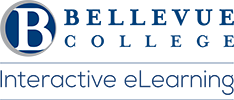When designing an online course, Canvas tools must be selected based on their ability to support active and useful interactions between students and the course content, students and the instructor and students and the rest of their classmates. Online course design that supports these three types of interactions is that which supports active learning.
Student – Content
Connecting students to course content is important for every instructor. These are just some of the tools that can ease confusion and facilitate student connection to course content:
Announcements
- Announcements allow you to communicate with your students about course activities and post interesting course-related topics. Click here to read more about using Announcements.
The Calendar
- Assignments can be linked directly to their due date on the Calendar. This gives students direct access to course content, while helping them to keep the due dates organized for all of the courses in which they are enrolled. Click here to read more about using the Calendar.
Canvas App
- This free app allows students to view their course Canvas sites from their smart phone:
Which Browsers Support Canvas?
Student – Instructor
Perhaps the most important relationship in any learning modality, the student to instructor relationship is supported by clear communication. Here are just a few of the tools that Canvas has to support clear student to instructor communication:
The Syllabus
- The Syllabus in Canvas makes it easy to communicate to your students exactly what will be required of them throughout the course in chronological order. Assignments can be linked directly to the syllabus as well. Click here to read more about using the Syllabus.
Announcements
- Announcements allow you to communicate with your students about course activities and post interesting course-related topics. Click here to read more about using Announcements.
The Calendar
- One of the challenges facing both students and instructors is keeping track of all of the assignments planned throughout the quarter. Instructors are teaching multiple courses and students are learning in multiple courses. Every course has its own timeline for when things need to be done. The Calendar helps everyone stay on schedule and up to date. Click here to read more about using the Calendar.
Inbox
- The inbox feature allows for easy and direct communication between students and instructors. Students using the free Canvas App for Android and iPhone can view Inbox messages directly from their smartphone. Click here to read more about using the Inbox.
Gradebook
- The Gradebook serves as a communication tool between students and instructors and allows students and instructors to track student progress. Click here to read more about using the Gradebook.
Rubrics
- Rubrics support clear instructor to student communication by setting specific expectations and outcomes for each assignment. Click here to read more about using Rubrics.
Analytics
- Analytics creates a global view of student activity while also allowing instructors to identify students who may be at risk and in need of additional support. Analytics may also be used to track student interaction with specific course elements, helping to inform course design choices. Click here to read more about using Analytics.
Conferences
- Conferences can be used for virtual lectures and virtual office hours. They can also be used to demonstrate technologies or troubleshoot technology issues online. Click here to read more about using Conferences.
Student – Student
This aspect of online learning is often forgotten or does not receive enough emphasis. Online courses which fail to create opportunities for students to interact with one another promote isolation and impede active student engagement. Online courses must facilitate the creation of a learning community which allows students to work together and learn from one another’s knowledge and experiences.
Inbox
- The inbox feature allows for easy and direct communication between students and their fellow classmates. Students using the free Canvas App for Android and iPhone can view Inbox messages directly from their smartphone. Click here to read more about using the Inbox.
Student Groups
- Student Groups are used as a collaborative tool where students can work together on group projects and assignments. Click here to read more about using Student Groups.
Conferences
- Conferences are an effective tool for supporting active student engagement in Student Groups. Click here to read more about using Conferences.
Collaborations
- Multiple users can to work together on the same document at the same time. Collaborative documents are saved in real-time, meaning a change made by any of its users will be immediately visible to everyone. Click here to read more about using Collaborations.
Discussions
- Canvas provides an integrated system for class discussions, allowing for active debate, brainstorming, and sharing of ideas between students. Click here to read more about using Discussions.
Peer Review
- The Peer Review tool allows students to comment on one another’s assignments. Click here to read more about using Peer Review.
Last Updated October 21, 2020
